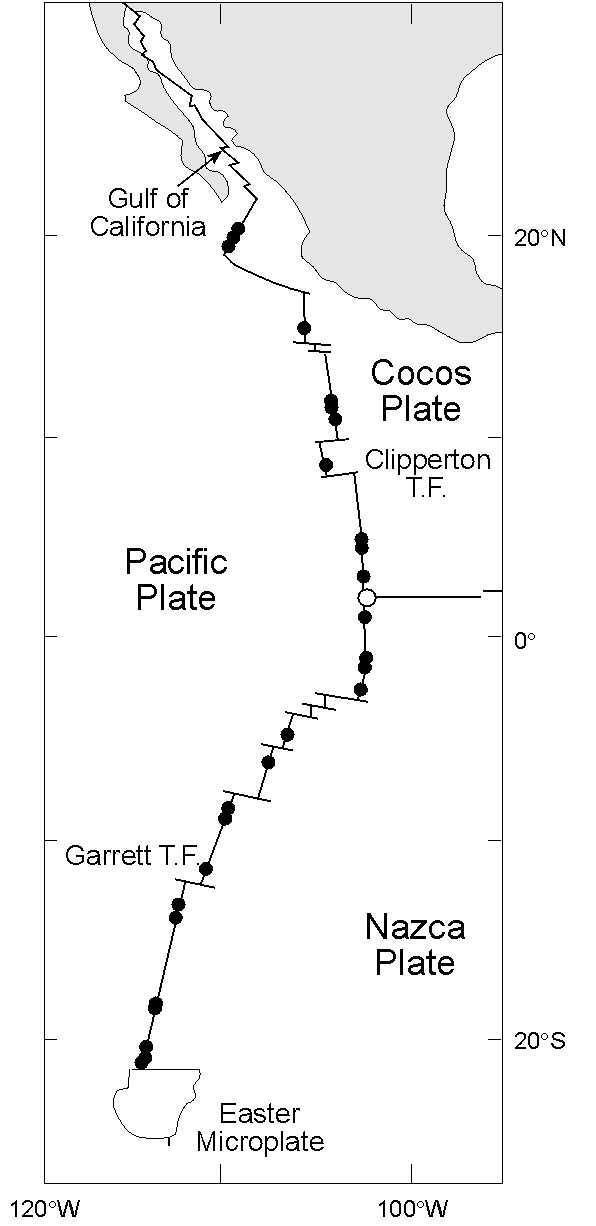Where It Lives
The giant tubeworm Riftia pachyptila inhabits areas along the East
Pacific Rise and the Galapagos Rift near deep sea
hydrothermal vents over a mile deep in the ocean where light cannot reach. They
form aggregations in close proximity of black smokers. Riftia lives among
giant clams, mussels, shrimp, sea anemones and fish.
Hydrothermal vents or as they are often called "black smokers" are areas where the earth's tectonic plates touch and are usually volcanically active. Sea water penetrates into fissures of the volcanic bed and interacts with the hot, newly formed rock in the volcanic crust. This heated sea water (350-450°) dissolves large amounts of minerals. The resulting acidic solution, containing metals (Fe, Mn, Zn, Cu...) and large amounts of reduced sulfur and compounds such as sulfides and H2S, percolates up through the sea floor where it mixes with the cold surrounding ocean water (4°) forming mineral deposits and different types of vents. In the resulting temperature gradient, these minerals provide a source of energy and nutrients to chemoautotrophic organisms which are, thus, able to live in these extreme conditions(7). This is an extreme environment with high pressure, steep temperature gradients, and high concentrations of toxic elements such as sulfides and heavy metals (1).
East Pacific Rise
